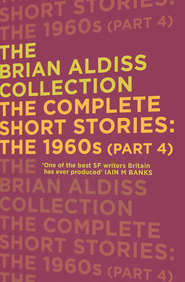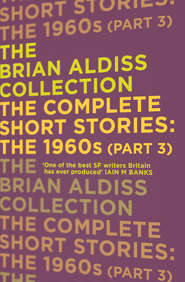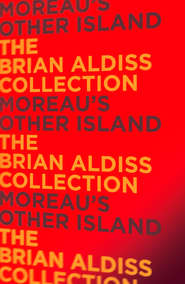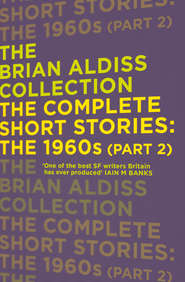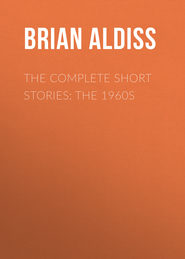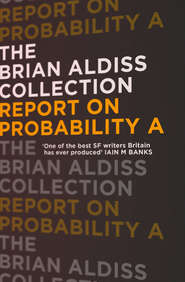По всем вопросам обращайтесь на: info@litportal.ru
(©) 2003-2024.
✖
Collected Essays
Настройки чтения
Размер шрифта
Высота строк
Поля
Something broke the glass and came in through the window while Zann was in this state. We never figured out what actually came in, apart from the blackness—though it’s true blackness screamed with shocking music. The Hungarians at it again, we supposed. Mother loved that bit. Perhaps she was thinking that my so-called father might be going to break in and attack us again. The idea certainly entered my mind. There was an hysterical edge to our laughter. Even as I read, I was dripping with uncanny perspiration.
It’s all so long ago. We were living in New England then. How foolish we were, how innocent, how—unread!
Even now, grey-haired and no longer quite so neurotic, I still see how whole sentences in that wonderful story must have struck those two 1930s idiots as funny. ‘My liking for him did not grow.’ ‘I had a curious desire to look out of that window, over the wall and down the unseen slope at the glittering roofs and spires which must lie outspread there.’ Well, all I can say is that when we looked out of our kitchen window we gazed down unseen slopes onto a banana yard.
To top it all, poor old Erich Zann was dumb and deaf. We had no idea of political correctness in our house. We were Presbyterians. We found deafness funny, particularly in a musician. (Beethoven was not on our curriculum.) Funny too, we thought in our perverted way, was the fate that overcame the old deaf wistful shabby grotesque strange satyrlike distorted nearly bald—with what youthful zeal I shouted out the adjectives!—viol-player. There’s the divinely hilarious moment when the unnamed hero feels ‘strange currents of wind’ and clutches Zann’s ice-cold stiffened unbreathing face, whose bulging eyes bulged uselessly into the void. I could hardly get the words out. Mother burnt a pair of pink bloomers with the iron.
Jesus, how we laughed. How silly I was at seven. Didn’t know a bit of good hokum when I saw it …
JEKYLL (#ulink_14a33294-3499-5654-912f-b6d672641a24)
All the characters in Stevenson’s story are isolated males: Mr Utterson, the lawyer; his friend and distant relation, Mr Enfield; Poole, the servant; and, of course, Dr Jekyll himself. They live separately in a city, the loneliest place. Jekyll himself foresees this isolation increasing in the future, when men become scarcely human, but rather ‘incongruous and independent denizens’. In the story, London masquerades as Stevenson’s native Edinburgh. All told, it’s a good setting for horror.
The horror is of a markedly cerebral kind. There are no monstrous creatures going about the world, as in Frankenstein or Dracula. Of course there is Hyde. But Hyde is a projection of Jekyll. This is why the story still interests us: Dr Jekyll and Mr Hyde is a pre-Jungian fable, a vivid illustration of the Shadow side of a decent man, that aspect—vigorously suppressed by the religious and ‘unco’ guid’ of Victorian Calvinist Scotland—of our natures whose presence we all have to acknowledge. The aspect which, as Jekyll says of his drug, shakes ‘the very fortress of identity’.
The fable concerns the shattering of this fortress. This is the point. The drug Jekyll takes is not the instrument of Hyde’s coming into being. The drug is merely a neutral means of transmission. In Jekyll’s words, ‘The drug had no discriminating action; it was neither diabolical nor divine; but it shook the doors of the prison house of my disposition’.
With these powerful words, Jekyll admits that had he undertaken his experiment in a nobler spirit, he might have released from within himself ‘an angel instead of a fiend’. How remarkably this reflection of the 1880s recalls comments on LSD experiments of the 1950s!
The best part of the novella—it’s scarcely a novel—resides in the final section, in Jekyll’s statement. It’s wonderful, a tour de force, although at the same time rather bloodless. Hyde’s sins are no more than alluded to. This is more a sermon than a horror tale. Here again, the future is prefigured. The drug cannot be correctly administered, or its effects controlled; we are reminded of L-dopa in Oliver Sachs’s remarkable story Awakenings, where any dose proved too little or too much.
Here is Stevenson’s moral imagination speaking, fleshing out what started as a dream (as did Mary Shelley’s Frankenstein). ‘It fell out with me, as it falls with so vast a majority of my fellows, that I chose the better part and was found wanting in the strength to keep to it.’ This is the Calvinist speaking, trying to hold to a rigid morality which the world was to cast aside in another generation or so, letting loose the Hyde of the First World War, 1914–1918.
Like the other two nineteenth-century novels of terror already referred to, Dr Jekyll and Mr Hyde has frequently been filmed. To my mind, all film versions of Frankenstein and Dracula are crude and almost parodic versions of the novels themselves.
Such is not the case with film versions of Dr Jekyll. The horror, as I’ve said, is too cerebral, too bloodless, for the movies. Injustice must be seen to be done. We have to be shown Fredric March or Spencer Tracy, or whoever it is, consorting with prostitutes, wielding the stick, being cruel. We have to see the beaker foam, with its deadly but seductive brew, to watch the terrible transformation, whiskers and all, take place … To witness what is at first willed become involuntary.
I believe Stevenson, the old Teller of Tales, would be pleased that Hollywood reached towards something darker and more disturbing than Treasure Island.
ONE HUMP OR TWO (#ulink_7d6621e0-f3fd-5101-894b-fe4e9c1efe63)
Lecture given at the IAFA Conference of the Fantastic (#ulink_e07582ac-ceae-5e25-b115-95fdd0ce4b1c)
I have come to few conclusions regarding national differences in British and American fantasy. The longer you look at the two animals the vaguer seem the distinctions. If you observe the dromedary or Arabian camel and the Bactrian camel—the only two sorts of camel on the planet—you immediately see the distinction we all know from childhood: the former has one hump, the latter two. But if you look at all other animals in the zoo, you don’t find anything else resembling a camel. Not even their relations, the llamas. The similarities are overwhelmingly greater than the differences.
Here we have these two camels, the US and the UK variety of fantasy. Here you have this panel reduced to counting humps.
Perhaps because of my early reading—my very early reading, when books still contained pictures—I regard fantasy, as distinct from SF, as having a spiritual, or perhaps I mean a religious, or perhaps I mean a metaphysical side. This regard comes from the area whence all memories spring, the personal deeps, compounded of old forgotten stories told and read, alchemic woodcuts, and perhaps a surly reproduction of Dante Gabriel Rossetti’s doppelganger drawing, How They Met Themselves, with lovers deep in the forest, transfixed. Perhaps too the interchange of light and shade above one’s cot—who knows?
If forced to it for the purposes of this forum, I’d say that this spiritual aspect is largely absent in American fantasy and at least flickeringly present in the English stuff. Why should this be? Possibly for a simple reason: the English stuff is so much older, has a much more ancient lineage (though I don’t forget that lineage also became, because of our shared language, a shared American lineage two centuries ago; were it otherwise—were you all Greek speakers, say—I’d not be here arguing the toss). Did the 1980s yield in the US anything so powerful—so full of ancient power—as Robert Holdstock’s wonderful Mythago Wood? The past activates fantasy, as the future SF.
I’ve never seen a reference, even in Trillion Year Spree, to the fourteenth-century poem, written in Middle English, entitled ‘St Erkenwald’. The poem is probably by the unknown author of Sir Gawain and the Green Knight. In the seventh century, the saint Erkenwald, as the poem tells, rebuilt St Paul’s cathedral in London on what had been a pagan site. Digging in the foundations, the workers come across an impressive sarcophagus on which are carved arcane sentences.
Wise men with wide foreheads, wondering in that pit Struggled without success to string them into words.
They lever up the lid of the coffin and find there a body nobly clad. The body is as fresh as if it were alive, with red lips and so on. After a prayer, St Erkenwald speaks to the corpse and rouses it, raises it from the dead, or at least from limbo. Unlike Lazarus, who keeps quiet about what happened to him, this revenant is talkative. He was a judge who has remained in limbo for almost eight hundred years. Having been born before Christ, he cannot enter Heaven, for all his good works. He’s a heathen. A point of Christian doctrine is being raised.
As Erkenwald blesses the judge in the name of the Father, his tears fall on the sufferer, who is thereby baptized. With joy, the heathen relates how his soul is released, to fly to Heaven.
With that he stopped speaking and said no more. But suddenly his sweet face sank in and vanished, And all the beauty of his body blackened like mould, As foetid as fungus that flies up in powder!
We seem to perceive here the precursor of a number of themes, from the Seven Sleepers of Ephesus, mentioned in Gibbon,
through to those two nineteenth-century monoliths of corrupt resurrection, Frankenstein and Dracula, passing on the way all the eerie vaults which lie in wait for the heroines of such Gothic works as Mrs Ann Radcliffe’s The Mysteries Of Udolpho.
One might also mention here ghost stories, a very English genre. Ghosts always appeared dressed—wearing something, armour, archaic costume, a winding sheet. In the poem, Erkenwald’s heathen similarly has the power to preserve his clothes intact. A peculiar power.
All this could hardly be called a tradition, but it does represent a line of thought. Perhaps it’s part and parcel of a consciousness of the buried past which is peculiarly British. In the USA, there was no buried past until yesterday; T. H. O’Sullivan was there to photograph the Battle of Gettysberg. You don’t share Europe’s secrecy. That’s why Hollywood’s in California, USA, not say, Paris, France. We have Stonehenge; you have Scientology. When you began to turn to scientific disciplines to uncover the forgotten story of the nomads who entered by way of the Bering Straits bridge, to fill this continent and its southern counterpart thousands of years ago, you created a new past—a future, as it were, with a sell-by date long expired.
Yet your past lacks a domestic touch, that intimacy with the past as dwelling in the next room behind the wardrobe, which is one essential of many British fantasies. Alan Garner’s work, for example, in Red Shift or The Owl Service, where ancient Celtic remains lie within sight of Jodrell Bank.
There isn’t and can’t be the equivalent of this kind of fantasy in the USA. The house is, of course, a dominant symbol in fiction from last century on, a common symbol all over the Western world. But houses evidently signify different things in the US and the UK.
Consider, for instance, the comparative scarcity of houses in the US, where 64% of the population own their own houses. The figure in England is about the same. With a population only four times larger than the UK and a land area about 3,000 times greater, the US plainly has comparatively fewer houses. Scarcity breeds suspicion. When our houses—our homes (that very English English word)—are haunted, we continue to live in them, quite often cherishing our ghost, giving it pet names. In the US, if we are to believe the evidence of the movies, from the celebrated Usher abode onwards, houses burst apart with evil. They provide no sanctuary. There’s little amity in Amityville, is there? Fantasy after fantasy shows houses going up in flames. Even in realist fantasies such as the movie Fatal Attraction, the home provides no secure place: the enemy worms her way in, supernaturally able to glide through phone, apartment and country house, into that sanctum sanctorum, the bathroom …
Having said all this, I have almost persuaded myself that there is a difference between the fantasy of the two countries. I’ve been talking only of subject matter and approach. Had we discussed style, we would have found more differences. But really it’s a matter of camels and humps again.
And, of course, the two animals have mated. The moment of coupling occurred in the 1960s, with the publication of Tolkien in the States. In England Tolkien’s The Lord of The Rings caused little stir. We’re long on genius, short on enthusiasm. It was here in the States that he was taken up on the most extraordinary scale. From then on, there was no respite. From then on, fantasy was to gain over SF. From then on, it was but a giant step forward for womankind to the Age of Le Guin and Earthsea and Anne McCaffrey and her dragons.
Now, fantasy and the elder gods rule supreme, like groundelder over-running a neglected estate.
Tis an unweeded garden, That grows to seed; things rank and gross in nature Possess it merely.
There’s so much imitation, so much derivation, so much commercialism, who can be bothered to judge? Discernment is lost. At last, all fantasy is the same. The successors of Thomas Covenant roam through lands resembling the lands of the Belgariad.
Et voilà—at last, what we’ve all been longing for! The result of this industrious miscegenation? A monstrosity with three humps! Yours, mine, ours.
1. Trans. Brian Stone, The Owl and the Nightingale, Penguin Books, 1971.
2. Edward Gibbon, The History of the Decline and Fall of the Roman Empire, 1773, Chapter XXXIII.
KAFKA’S SISTER (#ulink_0ebbb4e3-d384-5e39-832a-7cd50039b573)
‘How cold it is in the exploding world’ Julia and the Bazooka
When Franz Kafka wrote his famous letter to his father, one of his accusations was that his father did not keep the commandments he imposed on his son. Hence, said Kafka, his world had become divided into three parts.
In the first world, he felt himself a slave. The second world was a world of power, remote from him. The third was where everyone else lived happily and free from orders. Kafka’s lifelong guilt feelings arose from his oppressive sense of these divisions, brought about by his father’s transgressions. Kafka, in the words of one of his editors, Erich Heller, had ‘an irresistible tendency to fall apart’, contained only by his writing. Writing was his way of survival.
The parallels with the writer calling herself Anna Kavan are strong. Her quarrel was with a mother who would not keep her own commandments. Like Kafka, Kavan seems as a child always to have felt herself in the wrong; and this feeling, as she reached adult years, also matured, into the prevailing sense that somehow her existence was unjustified, insubstantial. Like Kafka, she suffered in her struggle to come to terms with other people, and with herself.
‘It is as if I were made of stone, as if I were my own tombstone’, complains Kafka in his diary for 1910.
‘What exactly is it that’s wrong with me? What is the thing about me that people can never take?’, asks the narrator in Kavan’s wartime story, ‘Glorious Boys’.
‘And where am I to find a little warmth in this?’, asks the narrator in ‘My Madness’, as she becomes her own tribunal.
Implicitly, these and similar questions are asked in story after story. The ‘I’ character, a mirror image of Kavan, always expresses the same gamut of anxiety. The search is on, for something lost in childhood to be found in adult life. Insidious as a serpent comes the fear of others, the fear of relationships, but, most destructively, the fear of the self with its inadequacies, the first of Kafka’s three dreaded divisions.






